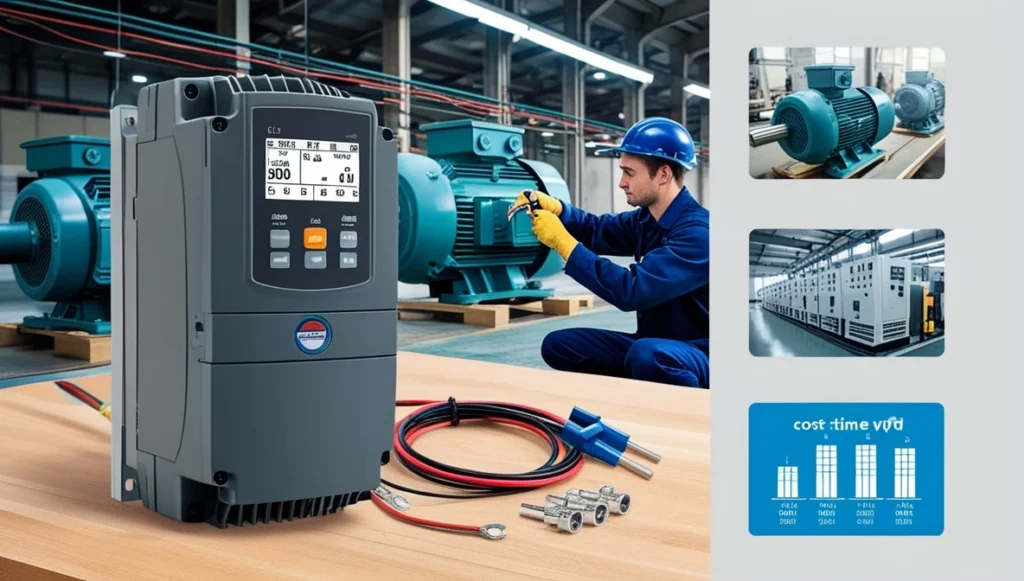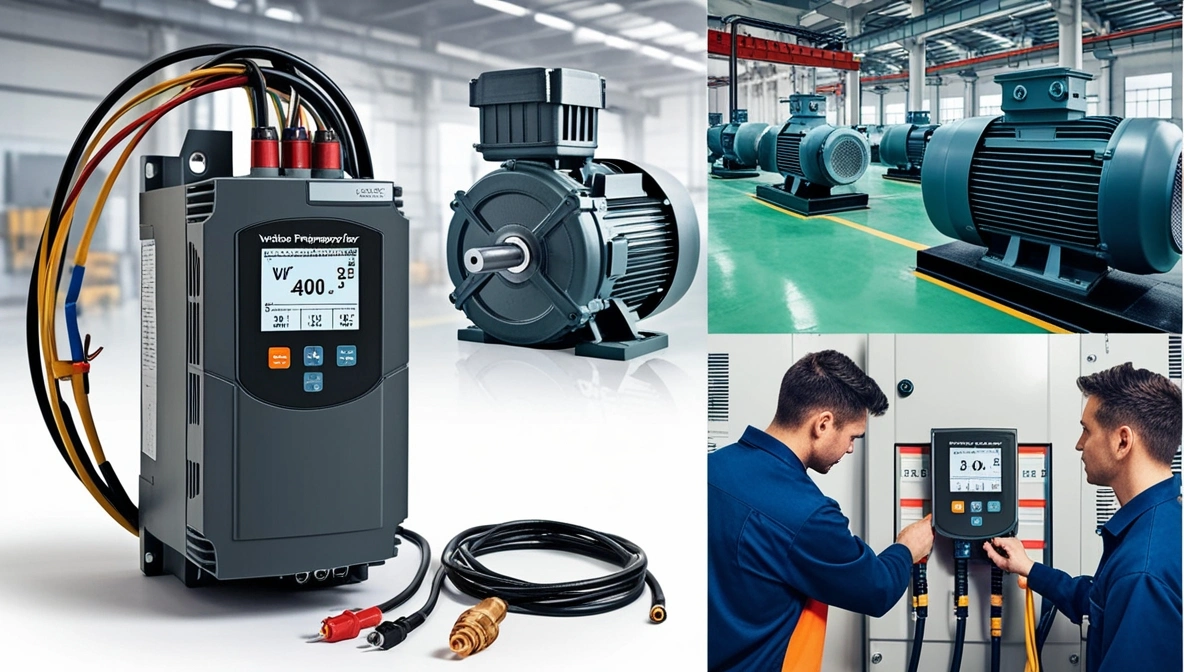When it comes to improving the energy efficiency and performance of your machinery, Variable Frequency Drives (VFDs) are a great investment. VFDs are used to control the speed of electric motors, allowing you to reduce energy consumption, improve operational efficiency, and extend the life of equipment. But the question that often comes up is: How much does it cost to install a VFD?
Whether you’re an industrial automation engineer, a plant manager, an electrical contractor, or a DIY enthusiast, understanding the costs involved in installing a VFD is crucial for planning your budget and ensuring you’re making an informed decision.
How Much Does It Cost to Install a VFD – Overview of Variable Frequency Drive with motor control
In this article, we’ll break down the factors that influence the cost of VFD installation and provide you with a detailed overview of what to expect. We’ll also cover the steps involved in installation, potential additional costs, and the long-term benefits that can make this investment worthwhile.
What is a VFD, and Why Should You Install One?
Before diving into the cost, let’s briefly review what a Variable Frequency Drive (VFD) is. A VFD is an electronic device that adjusts the speed and torque of an electric motor by controlling the frequency and voltage supplied to it. This allows you to optimize motor performance, reduce energy consumption, and enhance equipment lifespan.
Now, you might be wondering: Why should I install a VFD?

VFDs are especially beneficial in industries where motor-driven systems are constantly running at variable speeds, like HVAC systems, pumps, fans, and conveyors. By installing a VFD, you can reduce energy costs significantly since motors run only as fast as needed, avoiding unnecessary energy waste.
Factors That Affect the Cost of Installing a VFD
Several factors influence the price of installing a VFD. From the type and size of the VFD to the location of installation, each aspect plays a role in determining the final cost. Let’s look at the main factors that will affect your VFD installation cost.
1. VFD Type and Size
The first thing to consider is the type of VFD you need. There are various types, including:
- Standard VFDs: Ideal for basic applications.
- Vector-Control VFDs: Used for more complex applications that require precise control over speed and torque.
The size of the VFD, typically measured in horsepower (HP), will also impact the cost. Larger VFDs for heavy-duty applications will generally be more expensive than smaller ones used for residential or light commercial setups.
2. Application and Industry
The industry you’re working in can also affect the cost. For instance, if you’re installing a VFD for a heavy-duty industrial machine, you may need additional components like heat sinks, enclosures, and specialized wiring, which could add to the cost.
3. Installation Location
Installing a VFD in a new setup versus retrofitting an old system can also affect the overall cost. Retrofitting often requires more work, such as upgrading electrical wiring or reprogramming the existing motor controllers.
4. Electrical and Wiring Costs
Installing a VFD often involves updating your electrical system. You may need to upgrade circuit breakers, wiring, or fuses to handle the new VFD’s requirements. This can add a significant amount to the installation cost, especially if the existing system is outdated.
5. Labor and Installation Fees
Labor costs are another important factor in VFD installation. The complexity of the installation, as well as the location, can influence labor rates. For example, installing a VFD in a remote area may incur higher costs due to travel time and additional equipment needed.
How Much Does it Actually Cost to Install a VFD?
So, how much does it cost to install a VFD? The price can vary widely depending on the factors mentioned above. Here’s a general breakdown of what you can expect:
- Basic VFD Installation
For small to medium-sized VFDs, the installation cost typically ranges between $500 and $2,500. This includes the VFD itself and basic installation with minimal upgrades to the electrical system. Smaller VFDs for light industrial or commercial use generally fall on the lower end of the price range. - Larger and More Complex Installations
For larger, more complex VFDs used in heavy-duty industrial applications, the cost can increase significantly, ranging from $3,000 to $10,000 or more. This price includes the VFD, specialized installation, electrical upgrades, and potential customizations for the application. - Additional Costs
Beyond the basic installation, you may also incur additional costs for accessories like:
- VFD Enclosures: To protect the drive from dust and moisture.
- Control Panels: For better integration with the rest of your system.
- Upgraded Electrical Components: Such as fuses, circuit breakers, and wiring.
These additions can add anywhere from $200 to $1,500 or more to the overall cost.
Is Installing a VFD Worth It?
The installation of a VFD might seem like a significant upfront investment, but it offers substantial long-term savings. By optimizing motor performance, a VFD can reduce energy consumption by up to 30-50%, depending on the application. This means that while the installation cost may seem high initially, the energy savings can quickly make up for it.
Additionally, VFDs can extend the lifespan of your motors by reducing wear and tear. This can help you avoid costly repairs and replacements in the future.
Common FAQs About VFD Installation
Installing a VFD helps optimize energy usage, improve equipment performance, reduce maintenance costs, and extend the lifespan of motors.
While it’s possible for DIYers to install a VFD, it’s recommended to hire a professional electrical contractor, especially for industrial setups. This ensures the VFD is correctly installed and wired for safety and optimal performance.
The right VFD depends on your motor’s horsepower, voltage, and specific application. Consult with a professional to select the best VFD for your needs.
VFDs are low-maintenance, but regular inspections are recommended. You may also need to replace components like capacitors or cooling fans over time.
A standard VFD is suitable for basic applications, while a vector-controlled VFD offers more precise speed and torque control, making it ideal for more complex systems requiring higher performance.
Conclusion: Is a VFD Installation a Good Investment?
In conclusion, how much does it cost to install a VFD depends on several factors, including the type and size of the VFD, the industry you’re in, and the complexity of the installation. While the initial cost may seem high, the long-term benefits in terms of energy savings, improved performance, and reduced maintenance make VFDs a worthwhile investment for industrial automation.
By carefully considering your needs and consulting with professionals, you can make an informed decision and ensure that your VFD installation is done correctly and efficiently.


1 thought on “How Much Does It Cost to Install a VFD?”